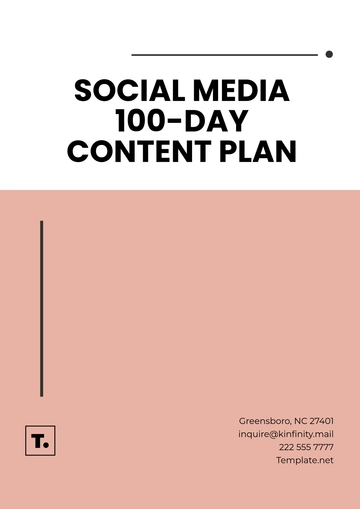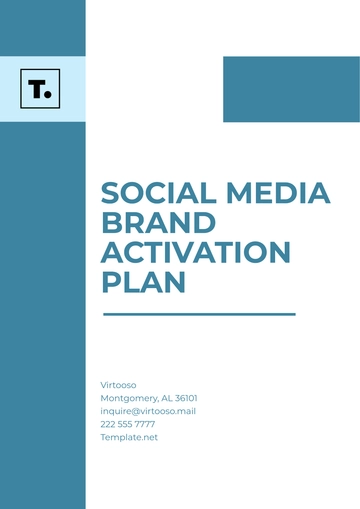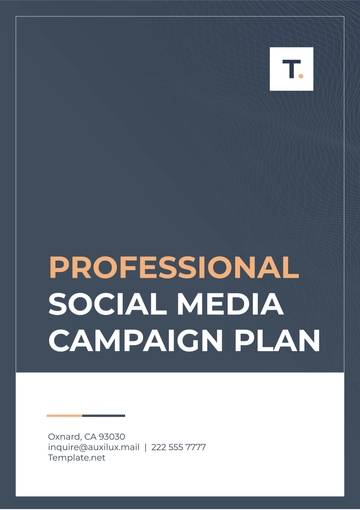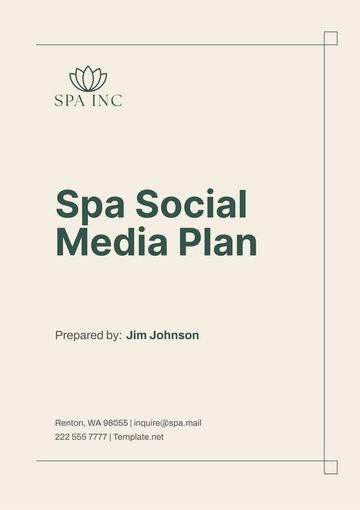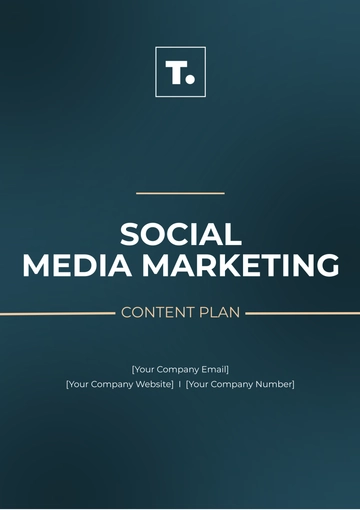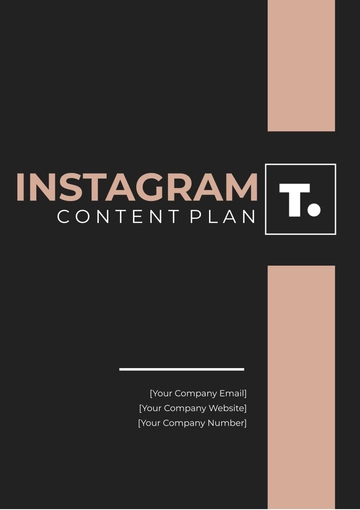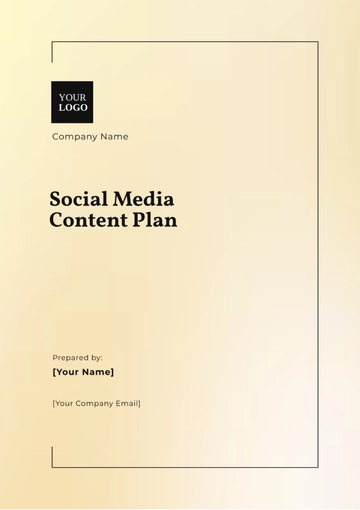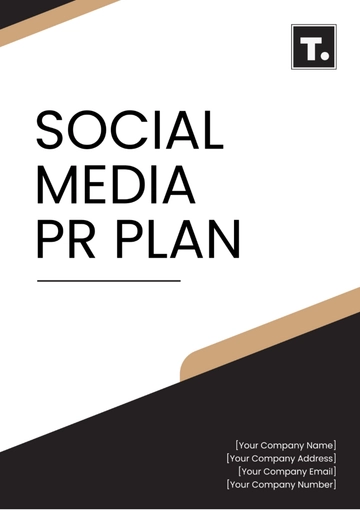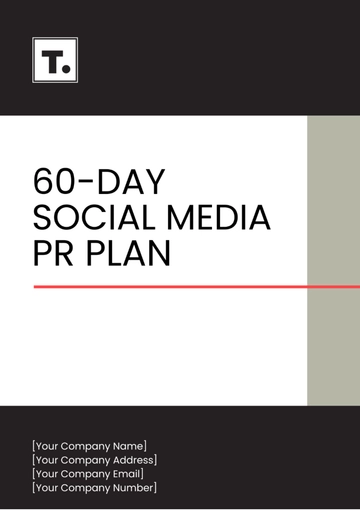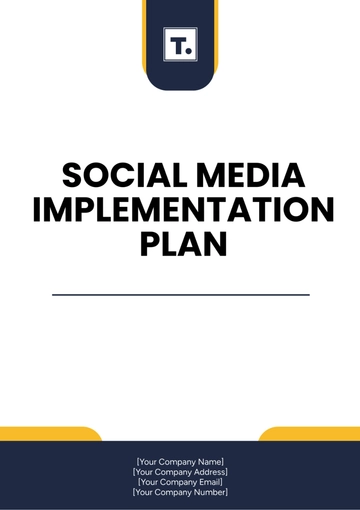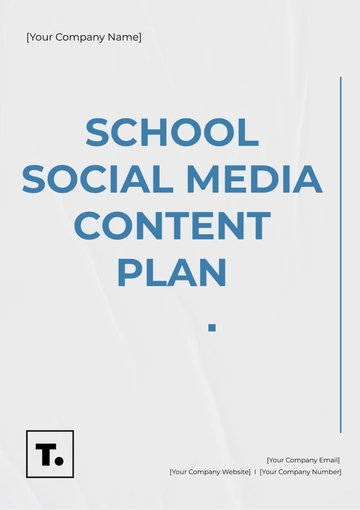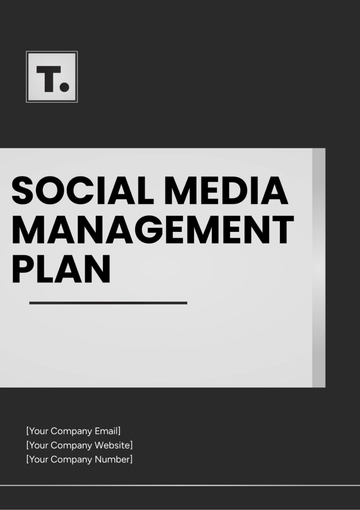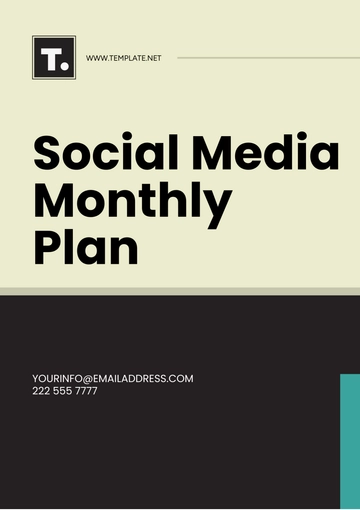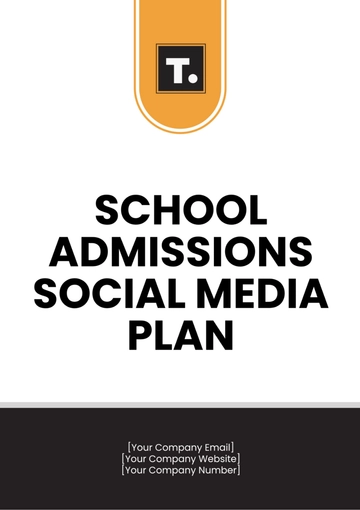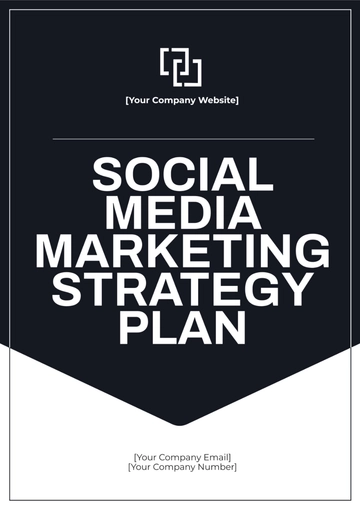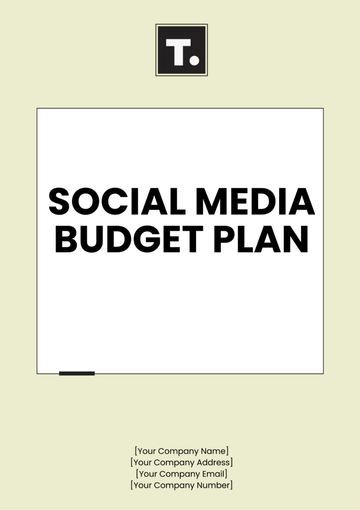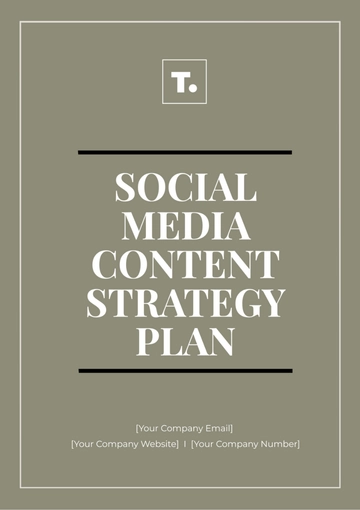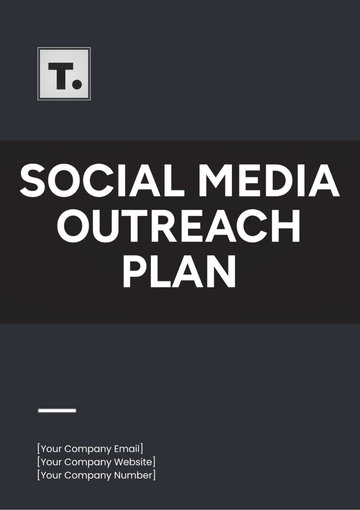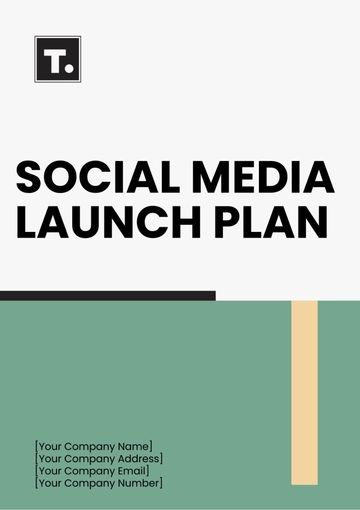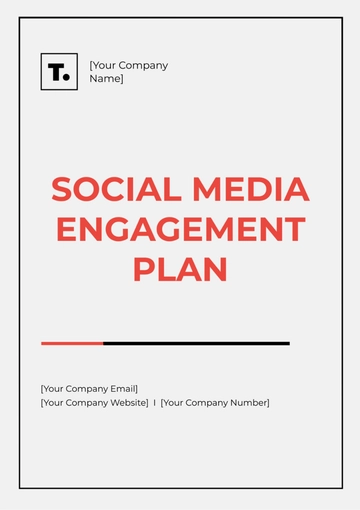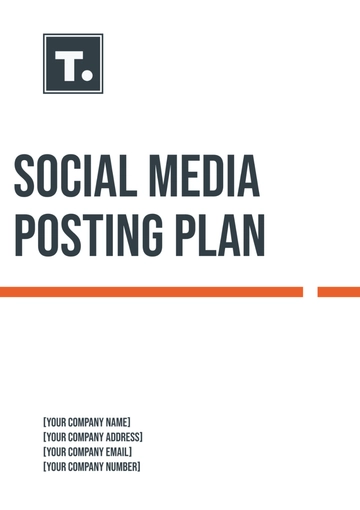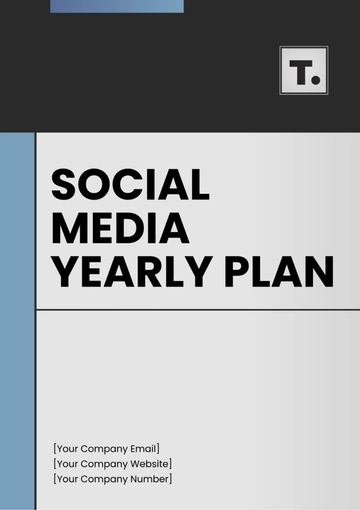Free Annual Social Media Plan
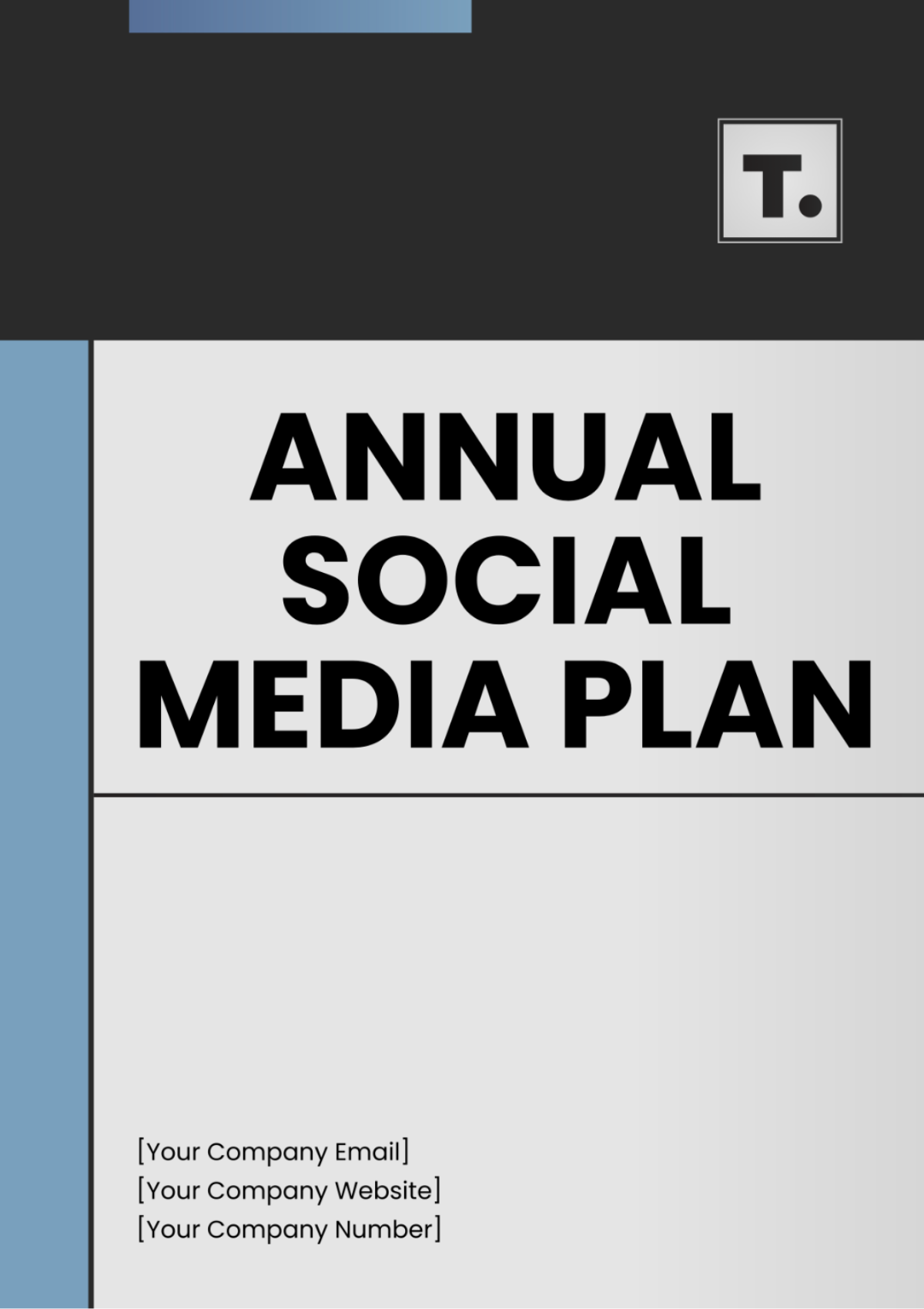
I. Executive Summary
This document outlines the annual social media strategy for [YOUR COMPANY NAME]. It details the objectives, strategic initiatives, content themes, promotional tactics, and measurement tools that will guide our social media activities throughout the year to enhance brand visibility, engage with our audience, and achieve specific business goals.
II. Yearly Objectives
Increase Brand Awareness: Grow our social media following by [TARGET PERCENTAGE]% across all platforms.
Boost Engagement: Enhance user interaction by increasing likes, comments, and shares by [TARGET PERCENTAGE]%.
Drive Website Traffic: Increase referral traffic from social media platforms by [TARGET PERCENTAGE]%.
Generate Leads: Capture [NUMBER] leads through targeted social media campaigns.
III. Target Audience
Primary Audience: Details about the core demographic groups, including age, gender, location, and interests.
Secondary Audience: Information on additional groups that could be tapped into with specific campaigns.
IV. Platform Strategy
A. Core Platforms
Facebook: Maintain a community-focused presence with regular updates and customer service interactions.
Instagram: Leverage strong visual content to showcase products and behind-the-scenes content.
Twitter: Engage in real-time conversations, customer service, and trend participation.
LinkedIn: Share industry insights, company news, and professional content.
B. Emerging Platforms
Tik Tok: Explore creative video content aimed at younger audiences.
Pinterest: Increase referral traffic through pins that emphasize visual appeal and link back to the website.
V. Content Strategy
A. Content Pillars
Educational Content: Share insights, tips, and how-to guides relevant to our industry.
User-Generated Content: Encourage and share customer stories and testimonials.
Behind-the-Scenes: Provide a look into the company culture and processes.
B. Content Calendar
Quarterly Breakdown: Outline of key themes, major campaigns, and content distribution across platforms for each quarter.
VI. Promotional Strategy
Paid Advertising: Allocate a budget for promoting posts, increasing page likes, and targeting specific demographics.
Influencer Collaborations: Partner with industry influencers to extend reach and add credibility.
Seasonal Campaigns: Plan campaigns around major holidays and events relevant to the brand.
VII. Engagement Tactics
Daily Monitoring: Regularly check all platforms for user comments and messages.
Interactive Content: Implement polls, quizzes, and live Q&A sessions to boost user engagement.
Community Management: Foster a community environment with regular interaction and engagement initiatives.
VIII. Monitoring and Analytics
Performance Metrics: Key metrics such as engagement rate, follower growth, click-through rate, and conversion rate.
Analytics Tools: List of tools and software for tracking performance and ROI.
Quarterly Reviews: Schedule for reviewing progress against goals and adjusting strategies as needed.
IX. Budget
Annual Budget: Total financial investment in social media for the year.
Monthly Allocation: Breakdown of budget allocation per month, covering content creation, advertising, tool subscriptions, and influencer fees.
X. Risk Management
Potential Risks: Identification of potential social media risks, including PR issues or changes in platform algorithms.
Mitigation Plans: Strategies to address these risks effectively, ensuring quick response and minimal brand impact.
XI. Conclusion
This annual social media plan aims to strategically position [YOUR COMPANY NAME] to capitalize on social media opportunities and navigate potential challenges. By adhering to this comprehensive framework, we will strengthen our online presence, foster meaningful interactions with our audience, and drive significant business results throughout the year.
- 100% Customizable, free editor
- Access 1 Million+ Templates, photo’s & graphics
- Download or share as a template
- Click and replace photos, graphics, text, backgrounds
- Resize, crop, AI write & more
- Access advanced editor
Plan your entire social media strategy with ease using the Annual Social Media Plan Template from Template.net. This customizable and editable template is designed for seamless integration, allowing you to make precise adjustments using our AI Editor Tool. Optimize your social media presence effortlessly
You may also like
- Finance Plan
- Construction Plan
- Sales Plan
- Development Plan
- Career Plan
- Budget Plan
- HR Plan
- Education Plan
- Transition Plan
- Work Plan
- Training Plan
- Communication Plan
- Operation Plan
- Health And Safety Plan
- Strategy Plan
- Professional Development Plan
- Advertising Plan
- Risk Management Plan
- Restaurant Plan
- School Plan
- Nursing Home Patient Care Plan
- Nursing Care Plan
- Plan Event
- Startup Plan
- Social Media Plan
- Staffing Plan
- Annual Plan
- Content Plan
- Payment Plan
- Implementation Plan
- Hotel Plan
- Workout Plan
- Accounting Plan
- Campaign Plan
- Essay Plan
- 30 60 90 Day Plan
- Research Plan
- Recruitment Plan
- 90 Day Plan
- Quarterly Plan
- Emergency Plan
- 5 Year Plan
- Gym Plan
- Personal Plan
- IT and Software Plan
- Treatment Plan
- Real Estate Plan
- Law Firm Plan
- Healthcare Plan
- Improvement Plan
- Media Plan
- 5 Year Business Plan
- Learning Plan
- Marketing Campaign Plan
- Travel Agency Plan
- Cleaning Services Plan
- Interior Design Plan
- Performance Plan
- PR Plan
- Birth Plan
- Life Plan
- SEO Plan
- Disaster Recovery Plan
- Continuity Plan
- Launch Plan
- Legal Plan
- Behavior Plan
- Performance Improvement Plan
- Salon Plan
- Security Plan
- Security Management Plan
- Employee Development Plan
- Quality Plan
- Service Improvement Plan
- Growth Plan
- Incident Response Plan
- Basketball Plan
- Emergency Action Plan
- Product Launch Plan
- Spa Plan
- Employee Training Plan
- Data Analysis Plan
- Employee Action Plan
- Territory Plan
- Audit Plan
- Classroom Plan
- Activity Plan
- Parenting Plan
- Care Plan
- Project Execution Plan
- Exercise Plan
- Internship Plan
- Software Development Plan
- Continuous Improvement Plan
- Leave Plan
- 90 Day Sales Plan
- Advertising Agency Plan
- Employee Transition Plan
- Smart Action Plan
- Workplace Safety Plan
- Behavior Change Plan
- Contingency Plan
- Continuity of Operations Plan
- Health Plan
- Quality Control Plan
- Self Plan
- Sports Development Plan
- Change Management Plan
- Ecommerce Plan
- Personal Financial Plan
- Process Improvement Plan
- 30-60-90 Day Sales Plan
- Crisis Management Plan
- Engagement Plan
- Execution Plan
- Pandemic Plan
- Quality Assurance Plan
- Service Continuity Plan
- Agile Project Plan
- Fundraising Plan
- Job Transition Plan
- Asset Maintenance Plan
- Maintenance Plan
- Software Test Plan
- Staff Training and Development Plan
- 3 Year Plan
- Brand Activation Plan
- Release Plan
- Resource Plan
- Risk Mitigation Plan
- Teacher Plan
- 30 60 90 Day Plan for New Manager
- Food Safety Plan
- Food Truck Plan
- Hiring Plan
- Quality Management Plan
- Wellness Plan
- Behavior Intervention Plan
- Bonus Plan
- Investment Plan
- Maternity Leave Plan
- Pandemic Response Plan
- Succession Planning
- Coaching Plan
- Configuration Management Plan
- Remote Work Plan
- Self Care Plan
- Teaching Plan
- 100-Day Plan
- HACCP Plan
- Student Plan
- Sustainability Plan
- 30 60 90 Day Plan for Interview
- Access Plan
- Site Specific Safety Plan
